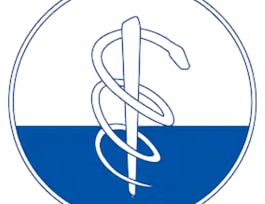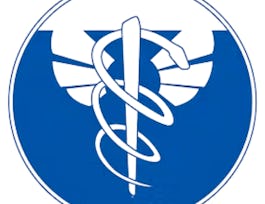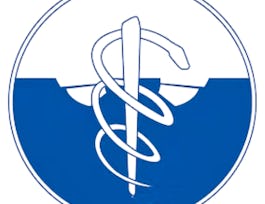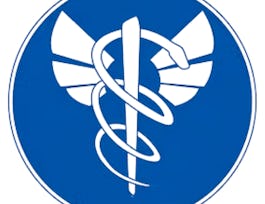In this course, you will get a thorough introduction to the emergency medical services system, and learn the foundation components to how it works as a whole. You will also learn the nuts and bolts of becoming a healthcare provider, and gain some basic knowledge about the human body. By the end of the course, you will be able to 1) understand the history and components of the EMS system, 2) speak the language of medicine with basic medical terminology, as well as have an understanding of basic human anatomy, 3) understand the different types of communications and how they are specific to EMS, 4) take vital signs and master the normal from the abnormal, and 5) master personal and scene safety, and begin the process of patient assessment.


EMT Foundations
This course is part of Become an EMT Specialization
Taught in English
Some content may not be translated



Instructors: Angela Wright, MD
46,531 already enrolled
Included with 
Course
(1,026 reviews)
96%
Details to know

Add to your LinkedIn profile
7 quizzes
Course
(1,026 reviews)
96%
See how employees at top companies are mastering in-demand skills

Build your subject-matter expertise
- Learn new concepts from industry experts
- Gain a foundational understanding of a subject or tool
- Develop job-relevant skills with hands-on projects
- Earn a shareable career certificate


Earn a career certificate
Add this credential to your LinkedIn profile, resume, or CV
Share it on social media and in your performance review

There are 5 modules in this course
In this module, you will learn about the nuts and bolts of the emergency medical services system. We will cover some brief history of EMS, as well as breakdown the different components of the system. There will be discussion about some of the medical and legal issues that are persistent in the practice of prehospital medicine. We will also address workplace safety and provider wellness, because you cannot take care of other people unless you are learning to take care of yourself!
What's included
8 videos7 readings2 quizzes
In this module, we will learn a new language. This module will cover basic medical terminology and some tips and tricks for “talking the talk.” This is also where we will cover the basics of anatomy of the human body! We will teach you the basics of human anatomy of the musculoskeletal, cardiovascular, pulmonary, abdominal, neurologic and endocrine system.
What's included
11 videos2 readings1 quiz
Essential to emergency medical services is communication. This module will discuss the various parts of the job that require communication and the different strategies to employ clear and concise communication. You will learn about the SBAR method of hand off reports, learn how to successfully communicate with patients, and we will cover some pearls and pitfalls to communicating within the EMS system.
What's included
10 videos3 readings1 quiz
Here we will cover vital signs, and learn about why they are vital! We will be teaching you how to take a blood pressure, respiratory rate, pulse, and assess a patient’s skin. We will also learn about taking a history during a patient encounter, and learn some standard approaches to this including the OPQRST and AMPLE templates of history taking.
What's included
10 videos5 readings1 quiz
In this last module, we will be discussing some bread and butter components of EMS. The first is scene safety and assessment of a scene. Then we will cover the complete assessment of a medical patient, and a trauma patient, using the national registry as our guideline. By the end of this, you will know how to communicate with patients and how to perform a thorough assessment of any patient you may encounter.
What's included
14 videos3 readings2 quizzes
Instructors


Offered by
Recommended if you're interested in Patient Care

University of Colorado System

University of Colorado System

University of Colorado System

University of Colorado System
Why people choose Coursera for their career




Learner reviews
Showing 3 of 1026
1,026 reviews
- 5 stars
84.61%
- 4 stars
11.68%
- 3 stars
2.72%
- 2 stars
0.38%
- 1 star
0.58%
New to Patient Care? Start here.

Open new doors with Coursera Plus
Unlimited access to 7,000+ world-class courses, hands-on projects, and job-ready certificate programs - all included in your subscription
Advance your career with an online degree
Earn a degree from world-class universities - 100% online
Join over 3,400 global companies that choose Coursera for Business
Upskill your employees to excel in the digital economy
Frequently asked questions
Access to lectures and assignments depends on your type of enrollment. If you take a course in audit mode, you will be able to see most course materials for free. To access graded assignments and to earn a Certificate, you will need to purchase the Certificate experience, during or after your audit. If you don't see the audit option:
The course may not offer an audit option. You can try a Free Trial instead, or apply for Financial Aid.
The course may offer 'Full Course, No Certificate' instead. This option lets you see all course materials, submit required assessments, and get a final grade. This also means that you will not be able to purchase a Certificate experience.
When you enroll in the course, you get access to all of the courses in the Specialization, and you earn a certificate when you complete the work. Your electronic Certificate will be added to your Accomplishments page - from there, you can print your Certificate or add it to your LinkedIn profile. If you only want to read and view the course content, you can audit the course for free.
If you subscribed, you get a 7-day free trial during which you can cancel at no penalty. After that, we don’t give refunds, but you can cancel your subscription at any time. See our full refund policy.


